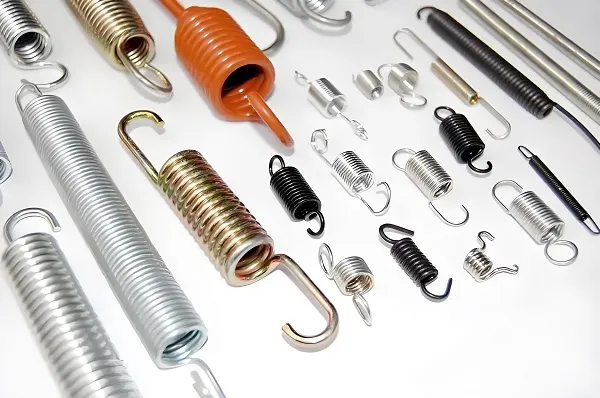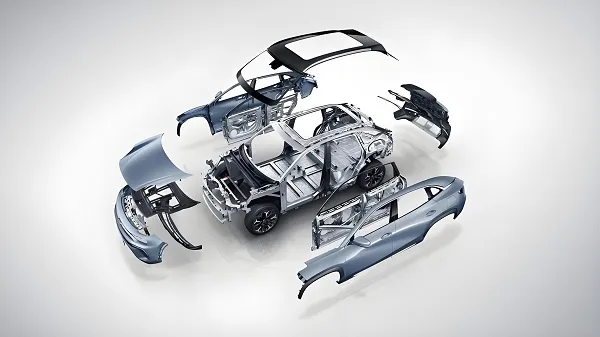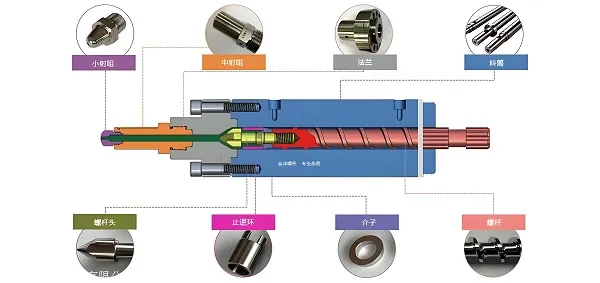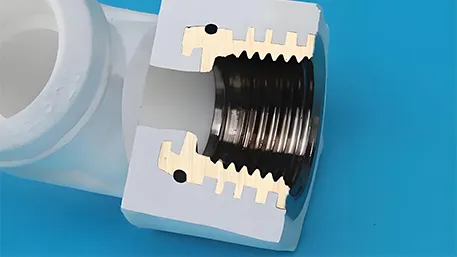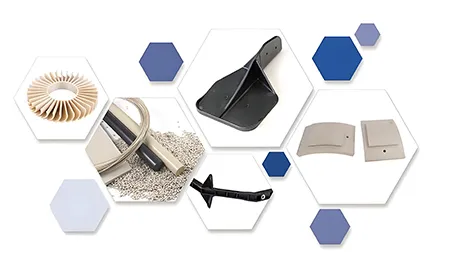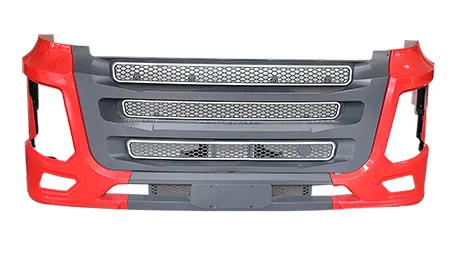Thick wall injection molding is an important plastics processing technology that employs an injection molding machine to perform hot melt injection molding of plastic materials to create thick-walled or large parts. Compared to conventional injection molding processes, thick wall injection molding requires the use of larger injection machines and molds, and the melt injection time and holding time also need to be longer to avoid warping, cracking and other defects. The principle is to melt the plastic granules hot through the injection machine, then use high pressure to inject the melt into the mold through the molding cavity in the mold, and then take out the molded part after a certain cooling time.

1. Advantages of thick-wall injection molding process
Structural solidity: Thick-wall injection molding can produce a thicker wall thickness, making the product more robust and durable, not easy to break, and better able to resist external impacts and loads.
Appearance quality: Thick-wall injection molding can ensure the appearance quality of the product, so that there are no bubbles, burrs and other defects, to improve the aesthetics and market competitiveness of the product.
High precision: Thick-wall injection molding can produce high-precision products with better dimensional accuracy and surface smoothness to meet the application scenarios of high-precision requirements.
Production efficiency: thick wall injection molding can produce multiple products at the same time, improve production efficiency, reduce costs, suitable for mass production.
2. Thick-wall injection molding parts characteristics
High strength: due to the larger wall thickness, thick-walled injection molded parts usually have high strength and rigidity, able to withstand greater mechanical stress.
Abrasion resistance: thick-walled injection molded parts have good abrasion resistance, and can maintain the performance and service life of the product for a long time.
Corrosion resistance: part of the thick-walled injection molded parts made of special plastic materials, with excellent corrosion resistance, suitable for harsh environments.
3. Thick-walled injection molded parts materials
ABS: with good toughness, surface gloss and easy processing, suitable for electrical, daily commodities, automotive industry and other fields.
POM: with high rigidity and wear resistance, suitable for application scenarios that need to withstand greater mechanical stress and wear resistance requirements.
PC: excellent impact strength and transparency, suitable for optical lenses, transparent parts and other applications.
PETG: good transparency and toughness, suitable for cosmetic packaging and other applications requiring transparency and aesthetics.
4. Characteristics of thick-walled injection molded parts made of different materials
| Material | Strength | Wear Resistance | Corrosion Resistance | Transparency |
|---|---|---|---|---|
| ABS | High | Good | Moderate | Moderate |
| POM | High | Excellent | Moderate | Low |
| PC | Excellent | Good | Moderate | High |
| PETG | Good | Good | Moderate | High |
(Note: The data in the table are relative values, used to compare the differences in the characteristics of different materials.)
5.Thick-wall injection molding process development
With the development of new materials and manufacturing technology, thick-walled injection molding process is also constantly optimized and improved. Advanced mold design, injection molding machine selection and optimization of injection molding process and other measures to solve the thick-walled products molding injection process of many technical difficulties, improve product quality and production efficiency. In the future, thick-walled injection molding process will continue to promote technological innovation, promote the sustainable development of the injection molding industry.
Customized thick wall injection molding parts FAQ
Q1:How to choose the right thick wall injection molding material?
A1: Choosing the right thick-wall injection molding material needs to consider the product’s usage environment and performance requirements, such as strength, abrasion resistance, corrosion resistance, transparency and so on. At the same time, the cost and processing performance of the material also need to be considered.
Q2:How long is the production cycle of thick wall injection molded parts?
A2: The production cycle of thick-walled injection molded parts depends on the complexity of the product, mold design and production efficiency of the injection molding machine. Generally speaking, the production cycle is between a few days to a few weeks.
Q3:How to control the cost of thick wall injection molded parts?
A3:Controlling the cost of thick-walled injection molded parts can be done in many ways, such as optimizing the mold design, choosing the right injection molding machine and material, and improving the production efficiency. Meanwhile, costs can also be reduced through batch purchasing and lean production.
In summary, thick-wall injection molding technology has significant advantages in manufacturing large or thick-walled plastic parts, and has become an important branch in the field of plastics processing. With the development of new materials and manufacturing technology, the thick-wall injection molding process will continue to be optimized and improved to provide more high-quality and high-efficiency thick-wall injection molded parts for various industries.

